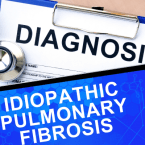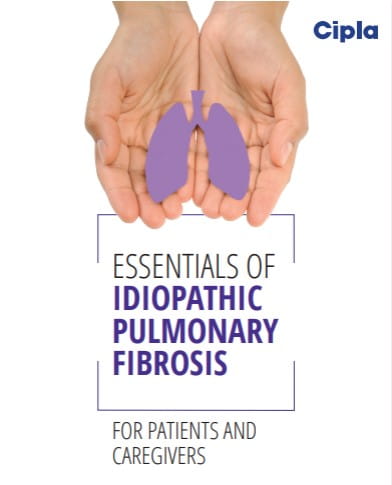Speaker: Peter George
The field of fibrosing interstitial lung disease (ILD) has witnessed significant advancements in understanding the prognostic role of structural and functional features of computed tomography (CT) imaging over the past two decades. Certain features, such as the usual interstitial pneumonia (UIP) pattern, have proven to be highly prognostic, especially in conditions like rheumatoid arthritis, where patients with UIP exhibit distinct clinical outcomes compared to those without UIP. In fibrotic hypersensitivity pneumonitis, the extent of fibrosis, the presence of honeycombing, and the UIP pattern also serve as critical prognostic markers. These findings have been similarly observed in idiopathic pulmonary fibrosis (IPF).
In clinical trials, such as the INBUILD (Investigating Nintedanib in Progressive Fibrosing Interstitial Lung Disease) study, researchers have enriched the trial population by selecting patients at risk for progression, focusing on those with a UIP pattern and a minimum disease extent of 10%. This approach ensured a sufficient rate of disease progression, allowing the demonstration of treatment effects. For instance, patients with a UIP pattern in the study exhibited a decline in forced vital capacity (FVC) of approximately 100 mL more than others over 52 weeks, and the therapeutic intervention showed effectiveness across the cohort. Traction bronchiectasis is another important feature on CT, often used to determine the presence and extent of fibrosis. Radiologists frequently assess peripheral lung abnormalities and the presence of traction bronchiectasis to confirm fibrosis. However, the identification of such features is prone to intra-observer variability. A study from 2016 highlighted the inconsistency in detecting UIP, traction bronchiectasis, and honeycombing, with greater variability observed among more experienced radiologists. Interestingly, as radiologists gained experience, the variability increased. This underscores the need for improved standardization in the assessment and quantification of these prognostic imaging features.
Further research has explored serial CT analysis, demonstrating that the progression of traction bronchiectasis is predictive of patient outcomes, including survival. Long-term follow-up allows radiologists to more accurately detect significant changes in fibrosis. However, short-term follow-up, such as 12-month intervals, poses challenges, as even highly experienced radiologists may struggle to detect meaningful disease progression. In clinical practice, waiting for long-term changes is not always feasible when making timely treatment decisions. Moreover, the standard of care for IPF and progressive pulmonary fibrosis (PPF) has evolved, leading to a narrowing window of detectable change in FVC over time due to therapeutic interventions that slow lung function decline. This presents additional challenges, as age-related decline in FVC (14–66 mL per year), variability in testing methods, and individual patient factors further complicate the accurate assessment of disease progression. Therefore, there is a pressing need for more sensitive and reliable tools to monitor disease trajectory in both clinical trials and routine practice.
Machine learning offers transformative potential in healthcare, particularly in prognostic biomarkers, accurate disease quantification, screening, and diagnosis—areas emphasized by the Food and Drug Administration (FDA). This discussion will concentrate on prognostic biomarkers and accurate disease quantification, as these have immediate applications. Prognostic biomarkers are crucial for predicting not only general population trends but also individual disease trajectories, such as FVC progression and survival outlooks. While significant progress has been made in prognostication through machine learning algorithms, advancements in evaluating serial changes remain limited. Challenges include variability in patient positioning, acquisition techniques, and differences among CT scanner manufacturers, all of which complicate the assessment of disease progression over time.
Two primary approaches have been pursued: enhancing the interpretation of established features like the UIP pattern and discovering novel features through advanced radiomics. Both methods have their advantages and limitations. It is vital that machine learning models deliver insights applicable to individual patients in real-world scenarios. Efforts by initiatives such as the Open Source Imaging Consortium are addressing this by collecting diverse global data to ensure the models are effective across various demographic and genetic backgrounds. Notable advancements include Simon Walsh’s SOFIA (Stratification of Fibrosis with Imaging Assessment) algorithm and Jonathan Chung’s UIP classifier. These tools have enhanced the sensitivity and specificity of UIP detection and linked these features with critical outcomes like mortality. Although mortality is often viewed as a late-stage benchmark, it serves as a necessary reference point to project short-, medium-, and long-term lung function changes. The objective is not to replace radiologists but to complement their expertise with machine learning algorithms, thereby improving diagnostic accuracy and treatment decisions. For example, integrating the SOFIA algorithm with traditional radiological assessments has demonstrated improved UIP identification and prognostication, illustrating the potential of machine learning to augment clinical practice and enhance patient outcomes.
Recent advancements in machine learning and digital technologies have significantly enhanced the assessment of ILD, particularly IPF. Utilizing deep learning algorithms, patients with uncertain UIP status can now be more accurately classified. Studies have demonstrated that patients identified as UIP through such technologies tend to have poorer outcomes, suggesting that these tools can aid in reducing the need for invasive procedures like biopsies or cryobiopsies by providing clearer diagnostic insight. The incorporation of artificial intelligence (AI) into clinical decision-making processes holds the potential to minimize unnecessary risk in patients with ILD.
The CALIPER (Computational Analysis of Lung Imaging Patterns and Evaluation of Radiomics) algorithm, an early tool developed to analyze vasculature in ILD, has proven the relevance of pulmonary vessel volume in influencing disease progression in IPF. Recent work has introduced a novel biomarker—the Weighted Reticular Vascular Score (WRVS)—which integrates reticular and vascular abnormalities, assigning greater prognostic significance to peripheral lung regions. Application of the WRVS on high-resolution CT (HRCT) scans from the Open Source Imaging Consortium has enabled the stratification of patients based on their risk of FVC decline, yielding predictive insights into disease progression and survival.
In a retrospective analysis of a clinical trial, patients with a WRVS score below 10% (indicating low progression risk) showed no significant FVC decline (>10%) over 52 weeks, with a mean loss of only 89 mL. Conversely, patients classified as high risk using WRVS exhibited an average FVC decline of 337 mL over the same period, highlighting the utility of this biomarker in enriching clinical trial populations by ensuring better stratification of progressive patients. This method reduces the possibility of an overrepresentation of stable patients in placebo arms, ultimately improving trial outcomes. In non-IPF ILD, the CALIPER (Computer-Aided Lung Informatics for Pathology Evaluation and Rating) study similarly identified the prognostic value of vascular-related structures (VRS) in rheumatoid arthritis-associated ILD. A VRS threshold of 4.4% was associated with increased mortality risk, further supporting the hypothesis that vascular components may play a critical role in fibrotic disease progression.
Future efforts in quantitative CT analysis must focus on detecting clinically relevant changes in disease extent. Defining such changes, for example, a fibrosis increase of 0.5% or 1%, is crucial to understanding disease progression and treatment efficacy. Moreover, addressing the variability in imaging biomarkers and ensuring the applicability of these techniques across different ILD subtypes will be essential for broader clinical implementation. Emerging data demonstrate that quantitative imaging algorithms, such as the Quantitative Lung Fibrosis (QLF), are responsive to treatment effects over time. These findings highlight the growing role of AI and quantitative imaging in improving prognostication and therapeutic monitoring in ILD, although further research is needed to refine these approaches for routine clinical practice.
The study involved analyzing patients with Idiopathic Pulmonary Fibrosis (IPF) using baseline and 12-month CT scans. Radiologists were tasked with assessing disease progression or improvement on a five-point scale, alongside lung function data at both time points. These results were then correlated with survival outcomes. Findings revealed that radiologists’ evaluation of progression aligned with significant survival differences, showing a promising hazard ratio. However, a FVC decline of more than 10% was more prognostic than the radiologist's assessment of change, confirming spirometry's reliability, though not perfect, remains a crucial tool. Additionally, a WRVS change of 3%—the clinically significant threshold—further improved mortality prediction.
The study underscores AI's potential to improve sensitivity in evaluating ILD. While multiple prognostic tools are available, clinical confidence in their application to individual patients is essential. However, there is limited data on serial change evaluation, largely due to the complexity of varying imaging protocols. Addressing regulatory hurdles remains a priority, both for clinical trial endpoints and integrating these technologies into routine practice.
European Respiratory Society Congress 2024, 7–11 September, Vienna, Austria.




